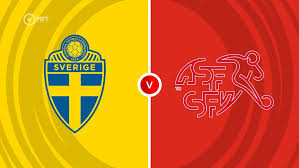Introduction
The comparison between Sweden and Switzerland is pertinent in today’s global context as both nations are known for their high standard of living, strong economies, and unique cultural identities. This comparative analysis delves into their socio-economic structures, political landscapes, and cultural attributes, showcasing the strengths and challenges each country faces.
Geography and Demographics
Sweden, a Nordic country located on the Scandinavian Peninsula, boasts a population of approximately 10.5 million people. It is known for its extensive forests, lakes, and coastal regions. Switzerland, on the other hand, is a landlocked country in Central Europe with a diverse landscape dominated by the Alps, and a population of about 8.5 million. The demographic diversity in both nations contributes significantly to their respective cultures.
Economic Structures
Both Sweden and Switzerland feature robust economies. Sweden has a mixed economy characterized by a combination of free-market capitalism and extensive welfare benefits. It is known for its innovation in technology, particularly in telecommunications, pharmaceuticals, and renewable energy. In contrast, Switzerland’s economy is highly developed, characterized by a strong financial sector, with major banks and multinational corporations headquartered in cities like Zurich and Geneva. Its economy benefits from a significant focus on precision manufacturing, pharmaceuticals, and high-quality exports, contributing to one of the highest GDP per capita in the world.
Political Systems
Politically, Sweden operates as a constitutional monarchy with a parliamentary democracy. The Swedish Parliament, known as the Riksdag, plays a vital role in legislation and governance. Switzerland, in contrast, is a federal republic with its own unique form of direct democracy, allowing citizens to vote directly on many issues. This political structure promotes a sense of involvement and accountability among Swiss citizens.
Cultural Aspects
Culturally, Sweden and Switzerland offer rich traditions and modern lifestyles. Sweden is globally recognized for its contributions to art, design, and pop culture, exemplified by figures like ABBA and IKEA. Swiss culture is heavily influenced by its geographical diversity, with four official languages (German, French, Italian, and Romansh) reflecting its regional variations. Swiss neutrality and diplomacy are also hallmarks of its cultural identity.
Conclusion
In conclusion, while Sweden and Switzerland display some similarities in their high living standards and commitment to social welfare, they are distinct in their cultural identities, economic strengths, and political systems. As global events continue to unfold, understanding these differences will be essential for both businesses and travelers. The ongoing collaboration between these two nations in various sectors also suggests a promising future of mutual growth and exchange.


